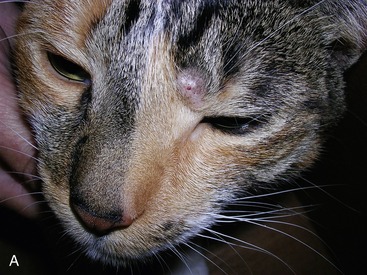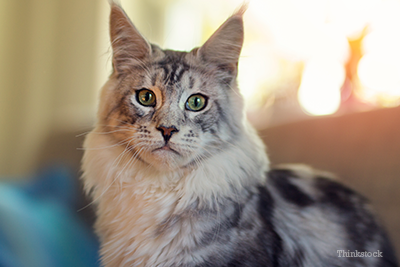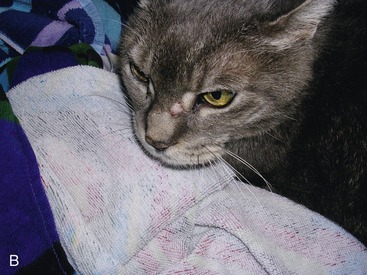mast cell tumor cat neck
Unlike the dog the most common locations found in feline patients are the head and neck followed by the extremities. The majority of mast cell tumors are found in the head and neck region in the cat.

4 Types Of Cat Cancer And Their Common Symptoms
Cats with these tumors are usually middle age or older 4-plus years of age but any cat can develop a mast cell tumor including kittens.
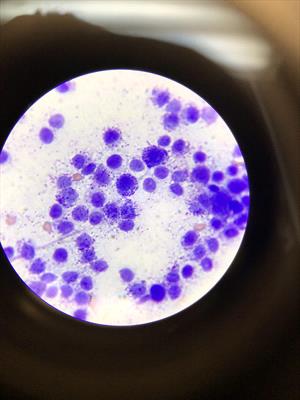
. Mast cell tumors can be benign non-cancerous or malignant cancerous and have varying degrees or ratings. Occasionally the mast cell tumors are located strictly in the spleen of cats. External skin mast cell tumors normally form on the head neck and body however can be anywhere.
This lecture will discuss feline oral tumors sinonasal tumors iris melanoma Hodgkins-like lymphoma salivary gland tumors. In cats mast cells typically develop on the head and neck especially around the base of the ears. Understanding the differential diagnoses in this anatomic area is crucial as the diagnostic and therapeutic approaches may vary.
Mast cell tumors of internal organs visceral Up to half of all mast cell tumors are visceral and they most commonly affect the spleen. A mast cell tumor MCT is a type of tumor consisting of mast cells. Subcutaneous mast cell tumors are more common and are the second most prevalent type of malignant tumor in cats.
A mast cell type and a histiocytic type. This refers to whether they develop under the skin or on internal tissue respectively. In the case of a mast cell tumor the healthy cell begins to mutate and take on an abnormal shape and can grow and reproduce invading other nearby tissue.
Mast cell tumours commonly affect the skin the spleen in the abdomen andor the intestines. Approximately 20 of skin masses in felines are cutaneous mast cell tumors and about 90 of those are benign. Feline mast cell tumors are commonly found in the head neck and limbs.
If your cat has the splenic form of the disease the most commonly observed signs are weight loss vomiting. Mast cell tumors most commonly develop on the skin or subcutaneous tissue however they can also primarily arise on internal organs such as the liver and spleen. Two distinct variants occur.
In the cat mast cell tumors of the skin are most likely to affect the head. Non-metastatic cutaneous mast cell tumors and non-metastatic subcutaneous mast cell tumors located at or distal to the elbow or the hock in dogs. In cats about 67 of MCTs also have this mutation.
Cutaneous mast cell tumors present as lumps swellings or lesions in the skin or under the skin usually around the head and neck but sometimes elsewhere. Most mast cell tumors arise in the skin but technically they can arise anywhere that mast cells are found. They are little firm raised hairless and can become itchy.
Cutaneous skin mast cell tumours most commonly affect the head and neck and. Though most commonly visible as a raised hairless mass mast cell tumors can look like all kinds of inflammatory lesions large and small. The most common feline breed associated with this disease is the Siamese cat.
CUTANEOUS MAST CELL TUMORS CMCT Cats with cutaneous mast cell tumors may presented with a solitary dermal mass a few masses or a large number up to 100 or more of lesions. While FNA is useful it does not provide any information about the tumors grade level of aggressiveness and biopsy is therefore recommended. Cervical Neck Disk Disease in Dogs and Cats.
Mast cell tumors can form nodules or masses in the skin and other organs and cause enlargement of the spleen and intestine. Typically they are shiny pink hairless nodules on the skin but there are many variations on this. The diagnostic work up in cats is similar to that for dogs.
Mast Cell Tumors in Cats In kitties mast cell tumors are most often seen in the skin of the head or neck but they can occur anywhere in the body. Occasionally mechanical manipulation during examination of this tumor will result in degranulation of mast cell which results in erythema and wheal formations. Louis-Philippe de Lorimier DVM DACVIM oncology Head and neck tumors are relatively common in aging cats.
The mast cell type is most common. Most mast cell tumors are seen as firm plaques hard flattened areas or nodules small lumps in the skin. Mast cell tumors are notoriously invasive and difficult to treat.
STEL FONTA tigilanol tiglate injection Mast Cell Tumor Treatment. Feline mast cell tumors of the mastocytic variety can often be diagnosed cytologically. Mast cells are a type of cell widely distributed in the body and help in the normal immune response.
Mast cell tumors are reported to arise in multiple cutaneous locations in approximately 11 of the cases. Most mast cell tumors are seen as firm plaques or nodules in the skin. The clinical signs of feline mast cell tumors depend on the location of the tumor.
Additional diagnostic steps will vary depending on the tumors location size and. What are the signs that my cat may have a mast cell tumor. Watch Mode of Action.
Approved by the FDA as a mast cell tumor treatment in dogs. Additionally cutaneous mast cell tumors found on the. Visceral mast cell tumors most frequently affect the.
The tumors are single hairless lumps generally 08 to 12 inches 2 to 3 centimeters in diameter. Mast cell tumors are initially diagnosed by fine-needle aspriation FNA cytology. Some cats will cause self-trauma by itching and chewing during these flare-ups.
Feline mast cell disease is different from mast cell tumors found in canine patients. They are small firm raised hairless and can become itchy. Mastocytoma in cats otherwise known as mast cell tumors can be either subcutaneous or visceral.
STELFONTA Mast cell tumor treatment. The remaining 10 arise from cutaneous sites of the head and neck. They may develop anywhere on the body but are most commonly found on the head and neck.
Occasionally the mast cell tumors are located strictly in the spleen of cats. In dogs mast cells can develop anywhere and even appear like discolored areas of skin on the nose. The head and neck regions are the most commonly affected areas especially the top of the head and either or both ears.
The majority of mast cell tumors are found in the head and neck region in the cat. They can be wide plaques or lumps. The masses are usually pink and alopecic and they may be smooth or ulcerated.
Mast cells are present in most tissues and can form an important part of your cats immune system. The skin form of the feline mast cell tumor typically arises around the head and neck and lesions may be solitary or multiple. Some cats will cause self-trauma by itching and chewing during these flare-ups.
It accounts for 8-21 of skin tumors in cats. The skin is the most common site for mast cell tumours in cats. 17th August 2018.
Mast cell tumors MCTs are the second most common skin tumor in cats. They are found primarily in cats older than 4 years old. In this case the treatment of choice would be surgical excision.
Which means they often go unnoticed or underappreciated by pet owners so that many of them can remain on an animal for a long time before theyre treated. External skin mast cell tumors generally form on the head neck and body but can be anywhere.

Diagnosis And Treatment Of A Feline Oral Mast Cell Tumor Sciencedirect
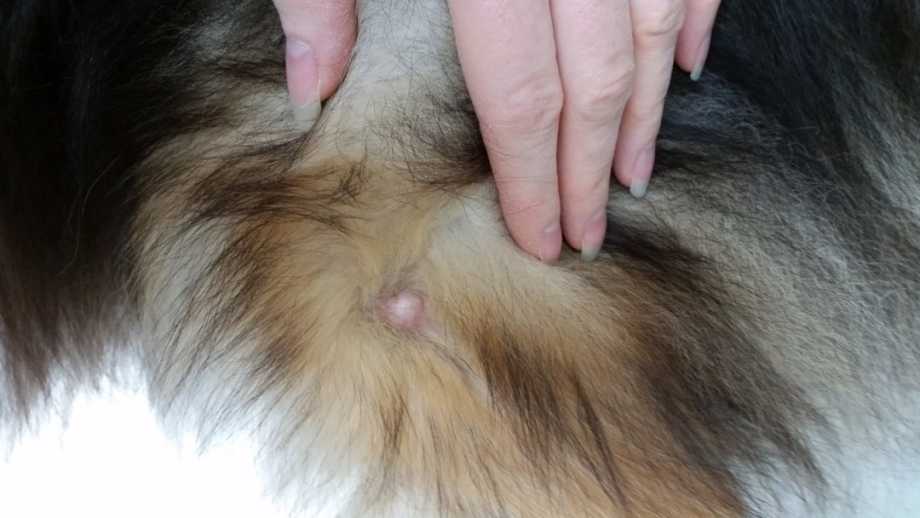
Mast Cell Tumors Mastocytomas In Dogs Small Door Veterinary

Animal Surgical Center Of Michigan Veterinarian In Flint Mi

Mast Cell Tumor Mastocytoma In Cats Petmd

A Well Differentiated Mastocytic Type Cutaneous Mast Cell Tumour Mct Download Scientific Diagram

Mast Cell Tumors In Dogs And Cats Veterinary Partner Vin

Mast Cell Tumors In Cats Symptoms Diagnosis Treatment All About Cats

Figure 3 From Mast Cell Tumors In Cats Semantic Scholar

Mast Cell Tumors Veterinarian In Montgomery Al Animal Hospital Of Montgomery
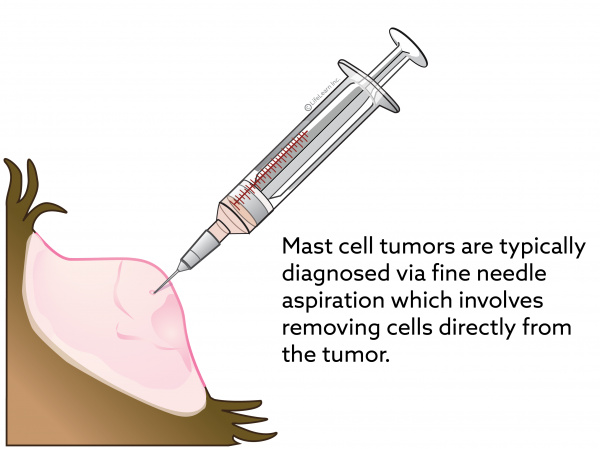
Mast Cell Tumors In Cats Vca Animal Hospitals

Figure 3 From Mast Cell Tumors In Cats Semantic Scholar

Mast Cell Tumors In Cats Symptoms Causes And Treatments

Mast Cell Tumors Veterinarian In Montgomery Al Animal Hospital Of Montgomery
